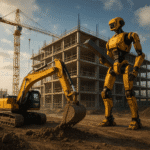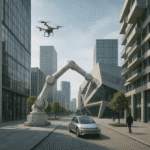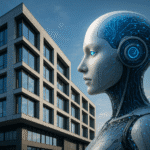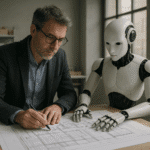The convergence of advanced robotics and visionary design is transforming how we conceive, plan, and erect the built environment. Autonomous systems are no longer confined to factory floors but are rapidly moving onto construction sites, where they promise unprecedented levels of precision, efficiency, and adaptability. This exploration uncovers how self-directed machines will reshape the future of architecture, bringing together AI-driven decision-making, 3D printing innovations, and sustainable practices that redefine our cities and landscapes.
The Rise of Autonomous Construction
Redefining the Role of Human Labor
Traditional construction methods heavily rely on manual labor, leading to variable quality and prolonged timelines. By integrating autonomous machinery, companies reduce dependency on human crews for repetitive and hazardous tasks. Drones survey sites day and night, creating real-time digital twins that inform precision placement of materials. Meanwhile, multi-axis robotic arms handle concrete casting, earthmoving, and steel welding with consistent results, enhancing overall project safety and reducing risk-related delays.
Seamless Site Monitoring
Continuous site monitoring through mobile robots and sensor networks offers unprecedented transparency. Autonomous rovers equipped with LIDAR and thermal cameras collect environmental data, detecting structural anomalies and ensuring compliance with safety regulations. This constant feedback loop not only shortens reaction times but also allows for predictive maintenance, optimizing uptime for both machines and humans on site.
Cutting-Edge Technologies Driving the Revolution
AI-Powered Design Optimization
At the heart of autonomous construction lies innovation in computational design. Generative algorithms leverage vast datasets—spanning material characteristics, climate models, and urban parameters—to propose optimized building layouts. The outcome is a synergy of form and function, where structures maximize daylight, airflow, and energy performance while meeting aesthetic ambitions. Architects collaborate with AI to iterate designs in real time, ensuring each modification aligns with project goals.
Additive Manufacturing on a Grand Scale
The advent of large-scale 3D printing has enabled entire building components—and in some cases, complete dwellings—to be fabricated layer by layer using cementitious materials, polymers, or recycled composites. Advantages include:
- Reduced material waste through precise deposition
- Complex geometries unachievable via traditional formwork
- Rapid prototyping and accelerated construction schedules
This approach extends to interior elements such as customized façades, bespoke furniture, and intricate façade patterns, all produced on demand by robotic arms tuned for precision.
Collaborative Swarm Robotics
Inspired by nature, swarms of small robots collaborate to assemble large structures. Each unit performs a specialized task—lifting modules, securing fasteners, or applying surface treatments—while communicating wirelessly to adapt workflows dynamically. This collaboration model enables massive scalability, as additional units can join or leave the swarm without disrupting ongoing operations. The result is a modular, decentralized construction process that thrives in both urban and remote environments.
Challenges and Future Horizons
Material Innovation for Sustainability
Ensuring that autonomous construction aligns with sustainability imperatives demands novel materials and circular economy principles. Researchers are developing bio-based composites, self-healing concretes, and carbon-negative binders that minimize environmental impact. Autonomous mixers and dispensers calibrate these heavy materials on-site, maintaining consistency while reducing carbon footprints. As a result, future buildings can actively sequester CO₂ and adapt to changing environmental conditions.
Regulatory and Ethical Considerations
Widespread adoption of autonomous builders raises questions about liability, workforce displacement, and data privacy. Policymakers must craft regulations that balance innovation with public safety. Standards will govern the testing and certification of AI-driven construction systems, while new training programs will reskill workers to oversee and maintain robotic fleets. Emphasizing human–machine partnerships can mitigate fears of job loss, transforming labor roles rather than eliminating them.
Envisioning Tomorrow’s Skylines
Looking ahead, autonomous construction will enable architectural forms once relegated to science fiction. Imagine adaptive skyscrapers that reconfigure internal layouts in response to user needs, or floating habitats assembled by aquatic robots in coastal zones. Urban planners could deploy preprogrammed modular units to rapidly restore infrastructure after natural disasters, leveraging scalability and speed. The intersection of AI, robotics, and advanced materials heralds a new era of built environments—where structures are not just erected but evolve organically through continuous feedback and improvement.










